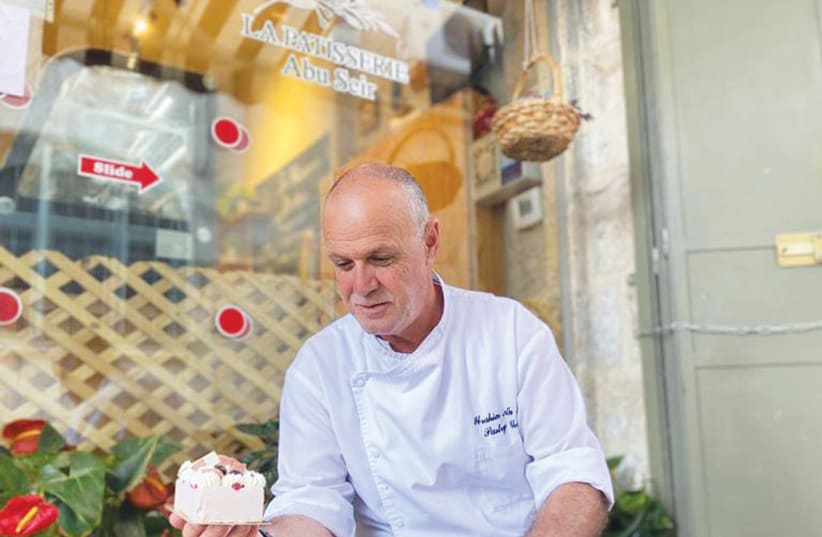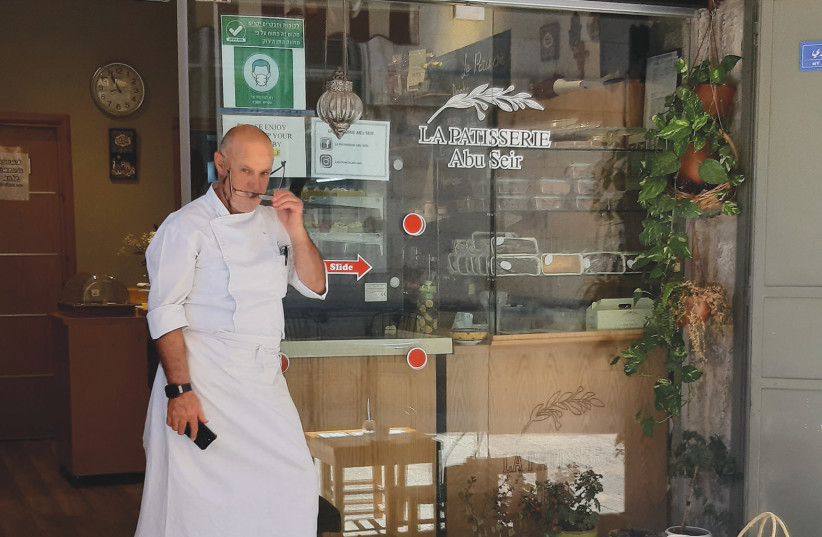The paved streets and the narrow alleys have been thoroughly cleaned, the sidewalks paved, and the dozen of mini-markets owned by Arabs in the Christian and the Muslim quarters are full of kosher products, and in most of them, the owners are careful to employ at least one Hebrew-speaking staff member. In the Christian Quarter, two patisseries challenge the bakeries that the French immigrants have opened in the west side. But last week, on the first day after the High Holidays, the cafés remained empty and the frustration and even some despair were felt everywhere in these two quarters of the Old City.
“The government does not allow foreign tourists to come to Israel, but we had some hopes that during the period of the festivals, Israelis from across the country would come and give some hope for a renewal of trade and economic life in the Old City,” says Ibrahim Abu Seir, owner and chef of La Patisserie, located at the entrance of the new gate leading into the Christian Quarter. “But it didn’t happen,” he concludes a sigh, suggesting I sample one of the last pastries on display inside the café.
The only client sitting outside of the café and sipping his coffee, an Israeli, joins the conversation and says, “If nobody cares to invite the Israelis to come here, and present Jerusalem as offering only the Kotel for visitors, why would people who are not familiar with the city would come here?”
Inside the Christian Quarter too many of the shops are closed. Here and there a souvenir shop is still open, but only for a few hours, with no expectation for any client. The same goes for the upper part of the shuk at the entrance from the Jaffa Gate. Most of the shops are closed, and the word there is that the majority of these shops won’t reopen when the coronavirus era will reach its end.
Abu Seir says, in perfect Hebrew, that they were not included in the last campaigns the municipality and the Jerusalem Development Authority launched toward the summer and even more toward the Tishrei Jewish holiday period that just ended. “It is as if the authorities are embarrassed or even afraid to market the Old City beyond the Kotel,” adds the Israeli client sitting there. “For Israelis who do not live in Jerusalem, there is no difference between the Christian and the Muslim Quarters – they are all the same, and more than a glimpse of fear from a sudden terror attack always hovers over the atmosphere.”
It is important to note that the typical division for tourism in Jerusalem is over 80% foreign tourism and the other 20% domestic tourism. Naturally, locals are more attracted by the Jewish sites for a visit in the Old City and will spend the rest of their stay in Jerusalem going to the culinary and other attractions in the western side. However, say the owners of businesses inside the Old City, a mention of these businesses and in the official campaigns could help, but it didn’t happen.
THE YEAR 2019 saw a boost in tourism to the city, both foreign and domestic, with a peak of more than 4 million visitors. Most strolled through the Old City markets and narrow alleys, boosting trade all over. But then the COVID-19 plague arrived, which halted this great tourist boom and put the municipality at a crossroads. What could be done until the rage passes was a major question that required rapid answers.
Teams of experts, with significant participation of the tourism department at the Jerusalem Development Authority tried to find ways to keep alive at least part of this touristic prosperity. Since the emphasis turned to locals, the “Jewish” path – the Kotel, the Hurva renovated synagogue, the City of David, the Cardo and the Rova (Jewish Quarter) – was the focus of the attractions proposed. For unclear reasons, the Christian and Muslim Quarters, where most of the trade, shops and cafés and restaurants are located were not mentioned, or mentioned in an offhand and unfocused manner. This, against the background of ongoing concern held by non-Jerusalemites (and perhaps even some locals) of any unpredictable act of terror (stabbing mostly) did the rest – and hence the recently renovated and cleaned streets of the Christian Quarter remain orphaned and empty of visitors.
The official Jerusalem, at the initiative of Mayor Moshe Leon, chose to continue to build and be built. During closed periods, during the summer months of 2020, an up-to-date tourism program for coronavirus time has been implemented, with different emphases, one that focuses on domestic tourism and highlights local cuisine and Jerusalem restaurants, urban nature sites and many other tourist destinations. Again – the Old City, except for the Jewish holy sites, was not part of it. The Mahaneh Yehuda market, the zoo and, of course, the aquarium gained from attention in the promos launched by Safra Square – but the Arab tourist sector in the Old City was not part of this initiative.
Close to Ibrahim’s patisserie, at the New Gate, stands the Sandrouni workshop and showroom, operated by George Sandrouni and his wife Dorin. On its web site, the location of the shop and showroom is clearly indicated, showing that it is not too much inside the somewhat scary or hostile Old City, but is located “in the heart of the Christian Quarter in Jerusalem’s Old City, 120 meters inside the New Gate.” For George Sandrouni, who speaks fluent Hebrew, the location of his business is ideal – as it reflects the “serenity and peace that are characteristic to Jerusalem’s Christian Quarter.” Yet Sandrouni’s products can also be ordered and delivered across the world, without having to come personally here, an advantage not shared by cafés, restaurants and patisseries around the area.
“It is true that there is no emphasis on the non-Jewish side of the Old City in the official campaigns launched to attract Israeli tourists” says a source at Safra Square. “It is not that we do not mention that part at all, but the main emphasis is on the Jewish sites – after all, one can choose to go through the shuk from Jaffa Gate in order to reach the Kotel Plaza, or to turn immediately to the right and take the path through the Jewish Quarter. Most of the Jerusalemites will take that path (the shuk) but visitors who are not familiar with the daily routine of our life here may feel a bit reluctant, feeling insecure.”
A municipality spokesman notes, “The domestic tourism campaign during the corona period appealed to different target audiences, with activities tailored to diverse populations in different areas of the city, including the Old City area and all districts. The Jerusalem Municipality and Jerusalem Development Authority are working to address all the tourism factors operating in the city, wherever they are. "
For his part, Ibrahim Abu Seir says, “We don’t know what and when things will come back to what we had before the coronavirus – but we still hope. What else can we do?”

